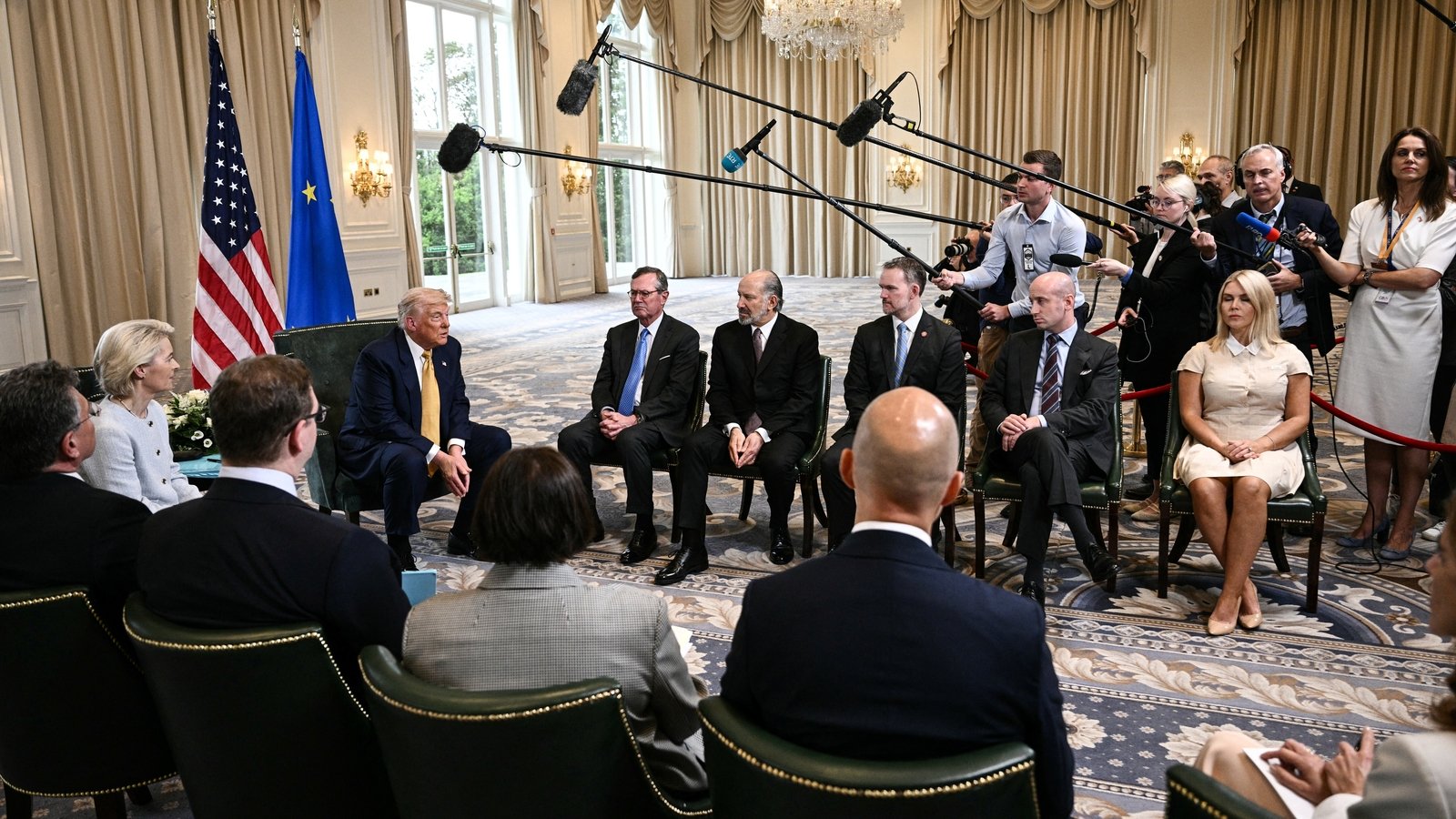While the crucial US EU trade deal announced this weekend does bring certainty for businesses, there are significant drawbacks.
Fundamentally, tariffs are negative for trade.
The US is a significant export market for Ireland, and many sectors now face duties of 15% which did not exist last year.
The biggest issue is pharmaceuticals, which are the largest Irish export to the US, valued at €44bn in 2024.
In recent months US President Donald Trump had threatened enormous duties on drugs imported by America.
He had ordered a national security investigation of the pharmaceutical sector.
Last night, Tánaiste Simon Harris said his understanding was that after the investigation concludes the maximum tariff which could be imposed would be 15%.
So, while the threat of more damaging duties is averted, pharmaceuticals made in Ireland may well face 15% tariffs in future, up from zero at present.

A decision on tariffs on spirits is critically important to Ireland’s whiskey industry
Another key sector for Ireland is the manufacture of computer chips.
Like pharmaceuticals it has been subject to a separate investigation by the Trump administration and faced the possibility of punitive tariffs, but it too could face a 15% tariff after the investigation ends.
Last night, European Commission President Ursula Von Der Leyen said there was no decision yet regarding spirits exported to the US.
This is critically important to Ireland’s whiskey industry which has already seen several recent closures.
There had been speculation that sector could have been part of a zero-for-zero tariff arrangement, but that is not yet agreed.
Another important area for Ireland is aircraft leasing.
Ms Von Der Leyen said last night that aviation would be part of a tariff-free arrangement.
Read more: EU-US trade deal will help protect Irish jobs – Taoiseach
For other EU countries the massive duty of 27.5% which was imposed on European cars now falls to 15%.
Some existing tariffs will be folded into that baseline 15%, meaning it would be an all-in tariff.
For example, it is expected to include the existing “most favoured nation” duties of 4.8% which exist currently under World Trade Organization rules.
The fact there is a deal at all avoids the threat of a prolonged tit-for-tat trade war.
It means businesses can plan, investments can be made, and job-creating projects can proceed.
But exporters are already seeking Government support as they navigate the new reality of the Trump administration’s tariffs.
The EU-US agreement is not a trade deal in the usual sense.
Normally these pacts are negotiated over years and culminate in a document running to hundreds of pages.
What was announced yesterday was the framework of a deal with much detail yet to be finalised. Yesterday wasn’t the end of the negotiations, but it was a milestone.
